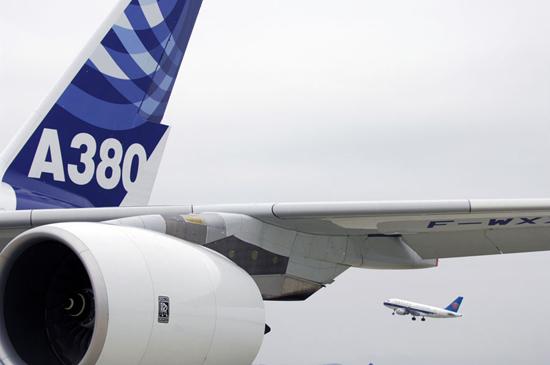An Airbus 319 aircraft, painted with yellow, blue and green stripes on white fuselage, a symbol of rainbows and plateau purity of southwest China's Tibet Autonomous Region, found its home in Tibet as the first airplane of Tibet Airlines in July.

Photo taken on Nov. 22, 2006 shows an Airbus 380, the world's largest passenger jet, parks at Baiyun Airport after a test flight in Guangzhou City, south China's Guangdong Province.
Labeled with "Tibet Airlines" in Chinese Han, English and Tibetan languages, the A319 sheds a Tibetan flavor -- Tibet-style interior, stewardesses of Tibetan ethnic group in traditional costumes, on-board service in three languages, etc.
More importantly, the airplane has a stronger "heart" -- specially modified engines to Tibet Airlines specification -- for flying above the roof of the world. The systems on the A319 was also modified to supply oxygen for 55 minutes, compared with the usual time of 22 minutes for aircraft that do not serve the plateau region.
The 26-year history of Airbus in China is a path from the bottom to the top, for its present arch rival Boeing almost held the whole market when Airbus first landed in China in 1985. But now it has already griped 45 percent market share.
Airbus' fast growth in China may lie on its strategy of localization, or developing suppliers and building manufacturing centers in the labor-cost country. All Airbus commercial aircraft now have components produced in China with six Chinese companies are involved in manufacturing parts for Airbus jet liners, adding a strong "Chinese flavor" to the big airplane family, even the largest passenger jet A380.
